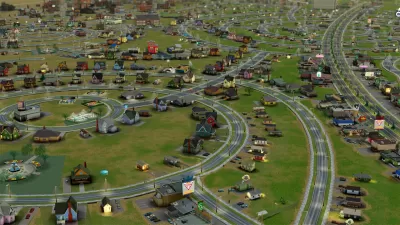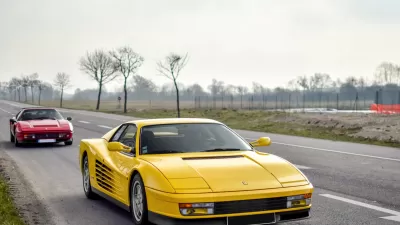The video game has inspired many people to pursue careers in planning. But, the newest version is also trying to better align the simulations with what planners face in the real world.

Jessica Roy writes about the history and influence of SimCity, the urban planning simulation game first released in 1989:
For many urban and transit planners, architects, government officials and activists, "SimCity" was their first taste of running a city. It was the first time they realized that neighborhoods, towns and cities were things that were planned, and that it was someone's job to decide where streets, schools, bus stops and stores were supposed to go.
While SimCity lead many planners into the field, the game has been criticized for creating worlds that do not reflect reality. The cities do not have bike lanes or mixed-use developments and, in the past, did not have parking. In addition, the options and solutions are oversimplified, say critics. "To lower crime rates, build police stations. If people complain about traffic, build more roads. If you need space to build a freeway or a stadium, raze working-class neighborhoods," says Roy.
The most recent iteration, an app called "SimCity: BuildIt" released in 2014, tries to address some of the limitations of earlier versions. The architecture and topography are more diverse, and some of the buildings include visible parking. "You can play a 'Green City' map in which residents have urban gardens and there's less pollution. Solar power is now an option," notes Roy.
FULL STORY: From video game to day job: How ‘SimCity’ inspired a generation of city planners

Manufactured Crisis: Losing the Nation’s Largest Source of Unsubsidized Affordable Housing
Manufactured housing communities have long been an affordable housing option for millions of people living in the U.S., but that affordability is disappearing rapidly. How did we get here?

Americans May Be Stuck — But Why?
Americans are moving a lot less than they once did, and that is a problem. While Yoni Applebaum, in his highly-publicized article Stuck, gets the reasons badly wrong, it's still important to ask: why are we moving so much less than before?

Using Old Oil and Gas Wells for Green Energy Storage
Penn State researchers have found that repurposing abandoned oil and gas wells for geothermal-assisted compressed-air energy storage can boost efficiency, reduce environmental risks, and support clean energy and job transitions.

Greening Oakland’s School Grounds
With help from community partners like the Trust for Public Land, Oakland Unified School District is turning barren, asphalt-covered schoolyards into vibrant, green spaces that support outdoor learning, play, and student well-being.

California Governor Suspends CEQA Reviews for Utilities in Fire Areas
Utility restoration efforts in areas affected by the January wildfires in Los Angeles will be exempt from environmental regulations to speed up the rebuilding of essential infrastructure.

Native American Communities Prepare to Lead on Environmental Stewardship
In the face of federal threats to public lands and conservation efforts, indigenous groups continue to model nature-centered conservation efforts.
Urban Design for Planners 1: Software Tools
This six-course series explores essential urban design concepts using open source software and equips planners with the tools they need to participate fully in the urban design process.
Planning for Universal Design
Learn the tools for implementing Universal Design in planning regulations.
Heyer Gruel & Associates PA
City of Moreno Valley
Institute for Housing and Urban Development Studies (IHS)
City of Grandview
Harvard GSD Executive Education
Salt Lake City
NYU Wagner Graduate School of Public Service
City of Cambridge, Maryland





























